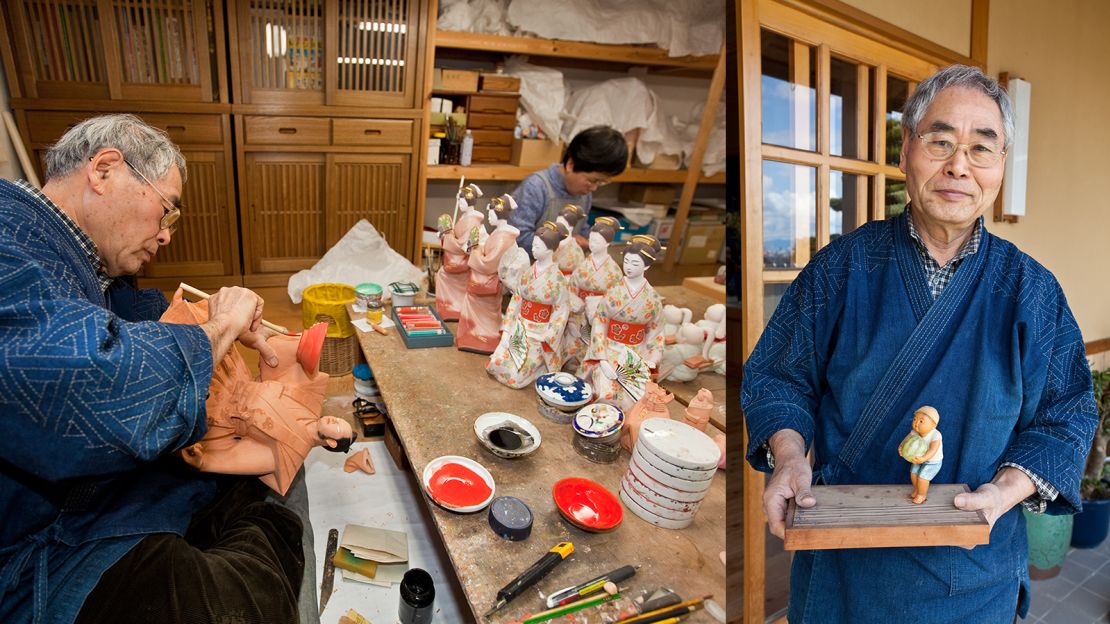Story highlights
Ningyo dolls are created in and around Japan's coastal city of Fukuoka
Small band of skilled artisans keeping ningyo industry alive
Craftsmen from many regions of Japan are noted for their hand-made dolls, but Hakata dolls – known locally as “ningyo” – are perhaps the most famous.
With production based in and around Fukuoka, a coastal city on the southern Japanese island of Kyushu, these pint-sized pieces of art have a long and evolutionary history.
“Production of Hakata dolls supposedly started in the early 17th century,” explains Harry Sargant of Inside Japan, a British company that organizes tours of Fukuoka.
“A lowly roof tile craftsman called Souhichi Masaki is said to have begun making basic ceramic dolls, which were then copied by other craftsmen. Over time they became increasingly sophisticated and colorful.”
The largest city on Kyushu, Fukuoka is actually two cities – Fukuoka and Hakata – rolled into one.
After the two merged in 1889, the name Fukuoka was applied to both, but many residents still think of their home as Hakata.
Stunning photos of Japan’s most serene and beautiful places
A national symbol of cultural pride

The dolls remain one of Fukuoka’s most iconic symbols.
Ningyo are popular across Japan, both as ornaments and reminders of Fukuoka’s rich culture and heritage.
“Most dolls are depictions of famous historical characters,” explains septuagenarian master doll-maker Kuniaki Takeyoshi.
“You’ll find everything from bijin (beautiful women), kabuki players, characters from noh (musical dramas) and religious and legendary figures, right through to sumo, samurai and children.”
Most dolls on the market are contemporary, although a small number of more valuable vintage examples date back to the post-World War II period, when a number were taken back to the United States by servicemen as souvenirs.
While the number of ningyo craftsmen based in Fukuoka has declined, a small band of enduring and highly skilled artisans keeps this niche industry alive.
“It’s certainly a difficult task inspiring the next generation of doll makers,” says Takeyoshi, who is also president of the Fukuoka Doll Making Union. “There are about 70 master craftsmen alive now.”
Takeyoshi is doing what he can to promote the art of doll making.
Through events, meetings and government liaison, the Fukuoka Doll Making Union works to encourage interest from youngsters, as well as to market ningyo at home and abroad.
Visitors to Fukuoka who wish to see how ningyo are made should stop by the Hakata Traditional Craft Center, while at the Shogetudo shop in the city’s Nakasu neighborhood they can even paint their very own Hakata doll.
Daniel Allen is a journalist and photographer based in London and St. Petersburg.










